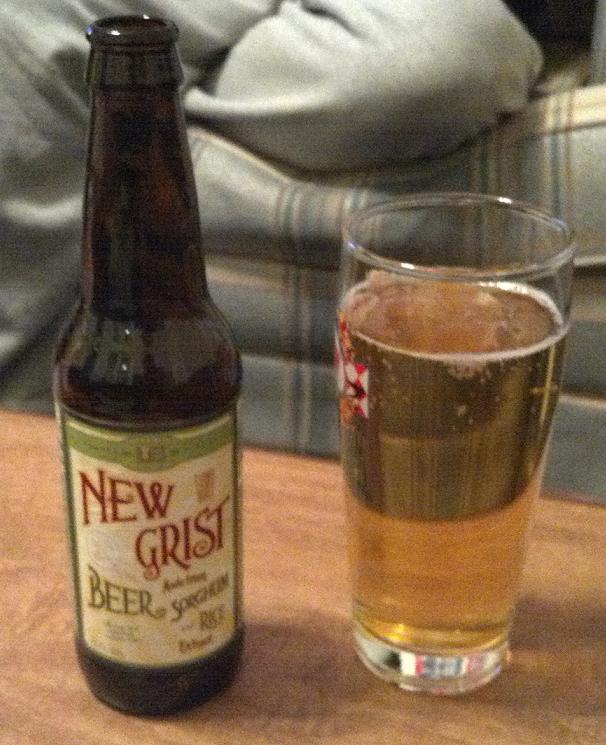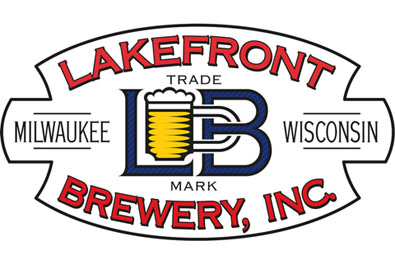Looking to the Past, For the Sake of the Future.
 Brewery
Brewery and
Country of Origin:
Lake Front Brewery of
1872 North Commerce Street Milwaukee, WI 53212, USA
Date Reviewed: 2-24-12 *Second sampling
If you have read our page on
beers of America, you will know that some traditional
English and
Dutch brewing practices involved the use of adjuncts. In terms of brewing beer, adjuncts are food sources for yeast that are broken down into simple sugars and alcohol by metabolic processes (during fermentation). More specifically, an adjunct is any grain that is used in brewing beer which is used in place of a malted grain, (such as barley and wheat, though these can be adjuncts as well) to create the mash (the WORT) which is used as an energy source during fermentation. Proven examples of adjuncts include wheat, barley, corn, oats, rye, and rice. It is important to note that rice, corn, and oats are free of gluten.
You might be asking why we're writing about this. Well, we recognize that there has been a massive increase in awareness for restrictive diets, especially for those who are sensitive to gluten. Sometimes people choose to rid themselves of gluten to be healthy or lose weight. But most people have no choice. Gluten makes them sick, and that becomes a problem when they like beer. Like we said earlier, beer has been made with corn and rice before. Oats are also gluten free however they are usually avoided by those who can’t have gluten because they are processed in the same places as wheat. So brewers have had to come up with solutions to tap into this heavily overlooked market. A few examples do exist, and the New Grist by the Lake Front Brewery in Wisconsin is one of them. We had
already tried a gluten free beer before, but it was rather repulsive. This one certainly has a lot of room for improvement, but it could be worse... not by much, but you know. Yet the more we thought about it, the more we realized that my assessment was unfair.
Date Sampled: 1-31-12 At: 7 Prescott Place - Lower Allston, Boston, MA, USA
Beer Style:
Gluten Free Ale
Alcohol by Volume: 5.75%
Serving Type: 12 oz Bottle, Stange Glass
Rating: 2.19
Look
This is an extremely clear (don’t have to filter out wheat), light golden brew with a modest amount of carbonation appearance and virtually no foam head This beer can be compared to champagne in more ways than one, and the way it looks certainly explains why. This is a very pale color which hints at how light and crisp the beer tastes and feels.
Aroma
This beer contains a moderately strong aroma that hints at sweetness and yes, the use of rice as an adjunct. The smell is somewhat metallic and doesn’t really translate to the actual flavor.
Feel
A little above moderate carbonation that, like soda, seems to be activated when consumed. Very light and crisp (almost refreshing) feel. Very light bodied and smooth. Low viscosity.
Taste
Both sweet and sour, this beer has similar notes to cheap champagne. Earthy aftertaste that dissipates very quickly with very little lingering. A little tang towards the end. The flavors are pronounced.
Our Take
As a beer per se, there really isn’t much to say about it. This is by no means anything groundbreaking or revolutionary. It will not win any awards (except for gluten-free specific awards possibly), and it is not going to be raved about by critics. So for that reason, the rather lackluster 2.19 rating is deserved. But as we stated earlier, this is not a beer for those who have a choice. Enjoying a beer with your friends or family is an experience. Just being able to do it means a lot, which is why our poor rating of this beer in all honestly, really doesn’t serve much of a purpose. This beer is a decent attempt by a well established craft brewery in a city defined by the brewing industry (Milwaukee) at both tapping into an oft-overlooked market, and making the lives of those who couldn’t enjoy a beer otherwise a little bit more enjoyable. That is the point of this beer. And after all, there are worse things you can have (and they contain wheat and barley). This, along with every other gluten free beer out there, is redefining the beer industry among a much larger effort to bring more gluten free alternatives to grocery store shelves. As with every new or unconventional method of doing things, the innovators and early adopters are the ones who have to deal with the pains and criticism. But with practice and time comes success. And there you go. These first few gluten free solutions may not be the best, but they’re paving the way for better, more respectable beers. So for the time being, is this a great beer? No. But is it noteworthy? Is it important? You bet your ass it is.

 New Grist Gluten Free Beer
New Grist Gluten Free Beer




